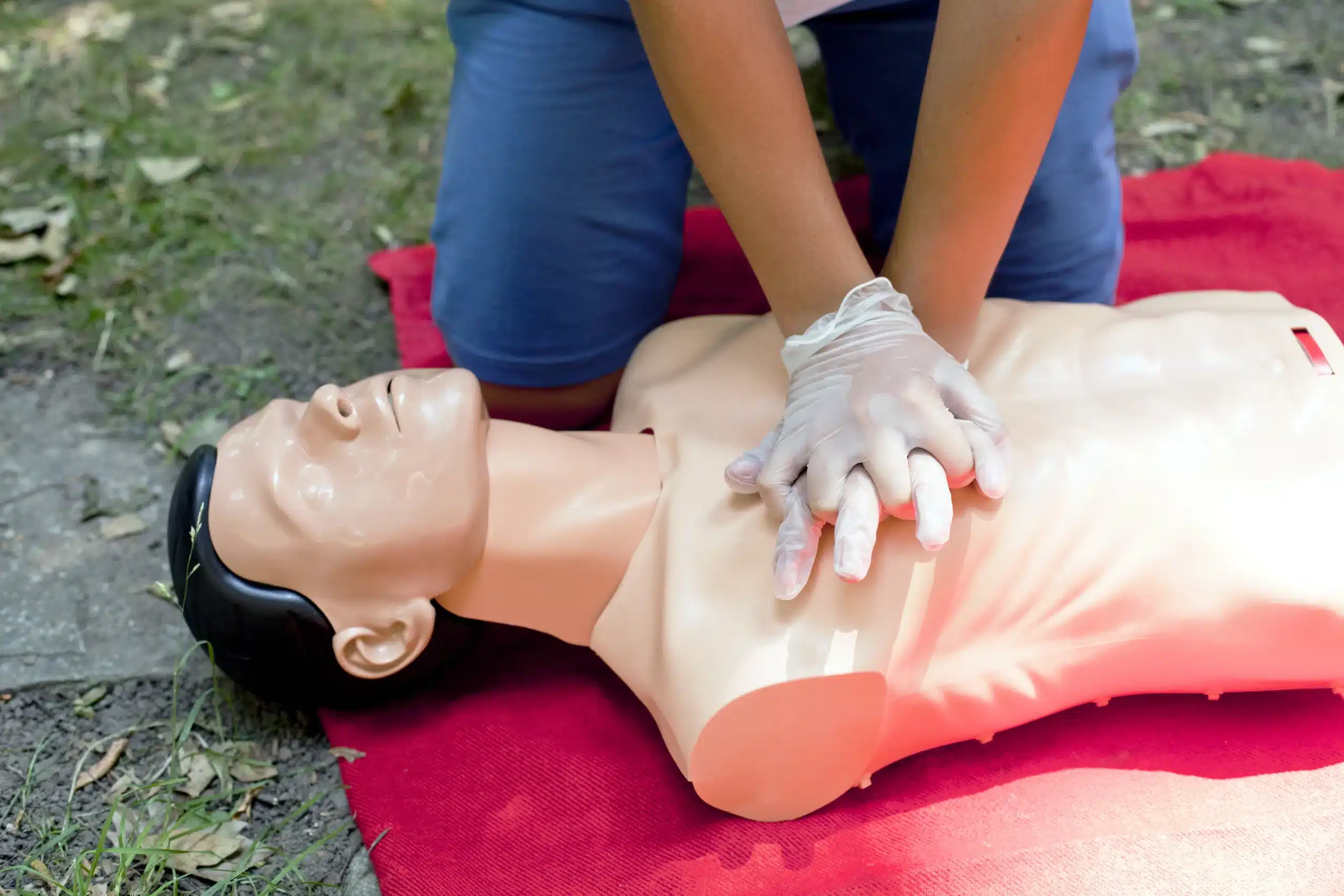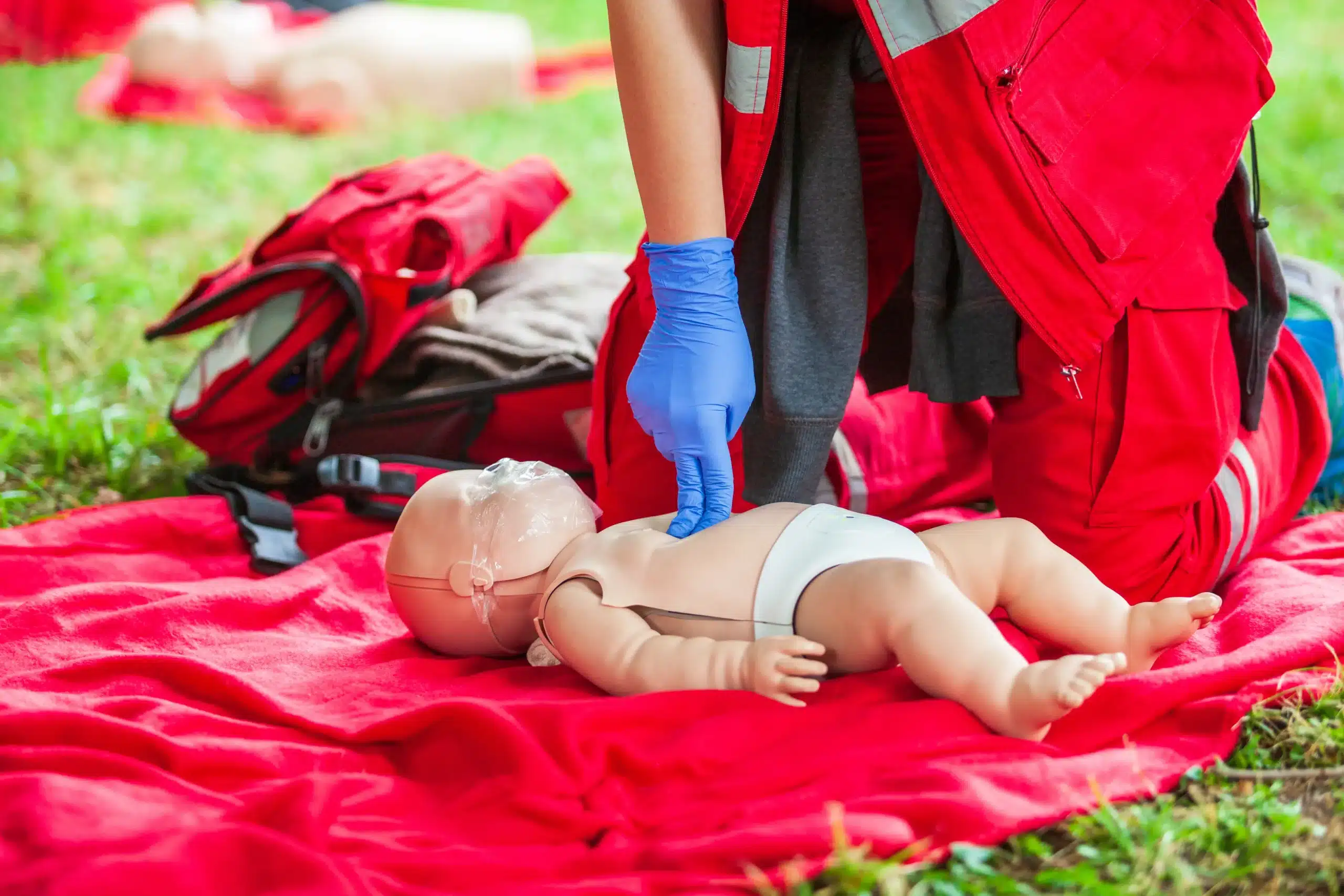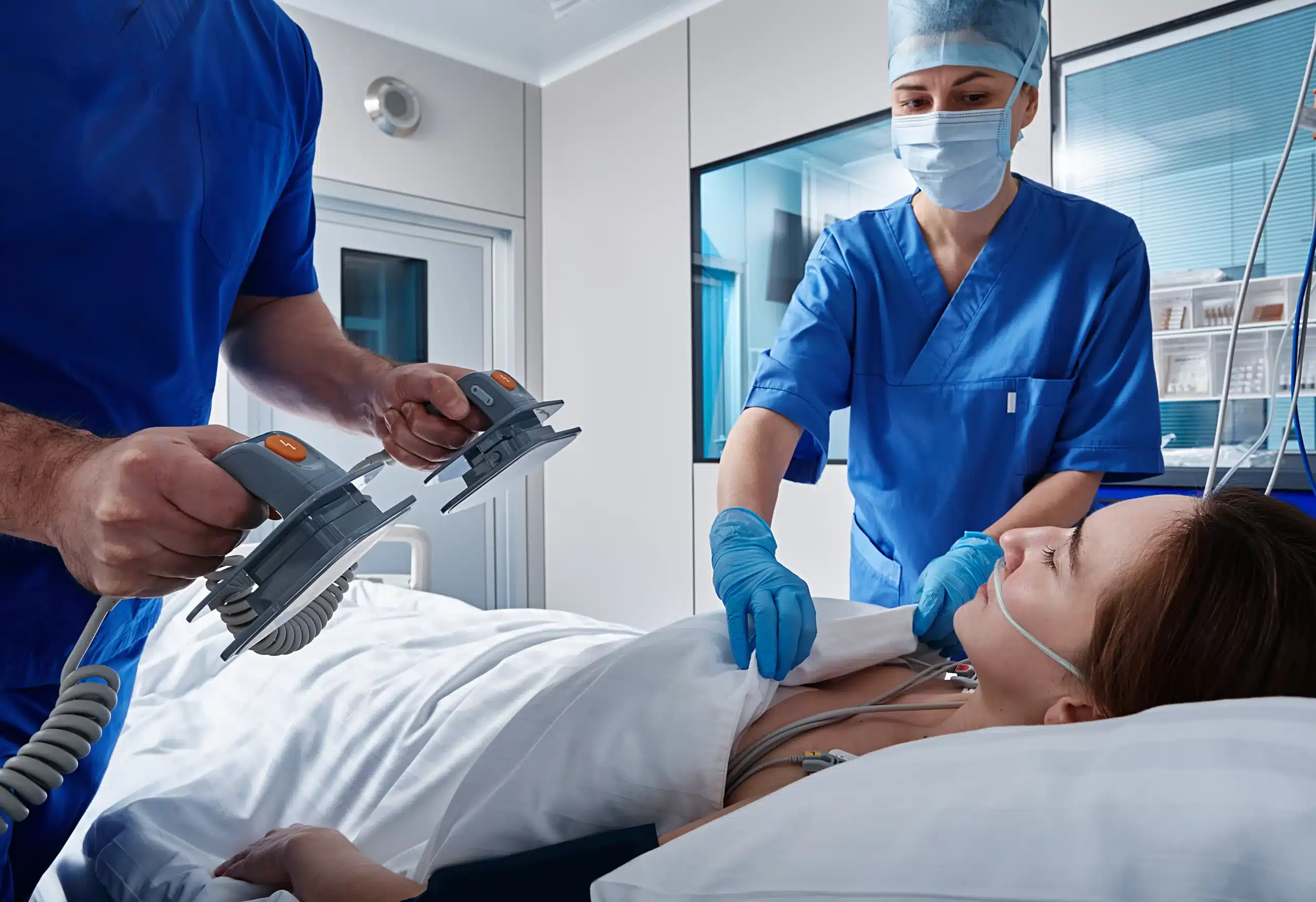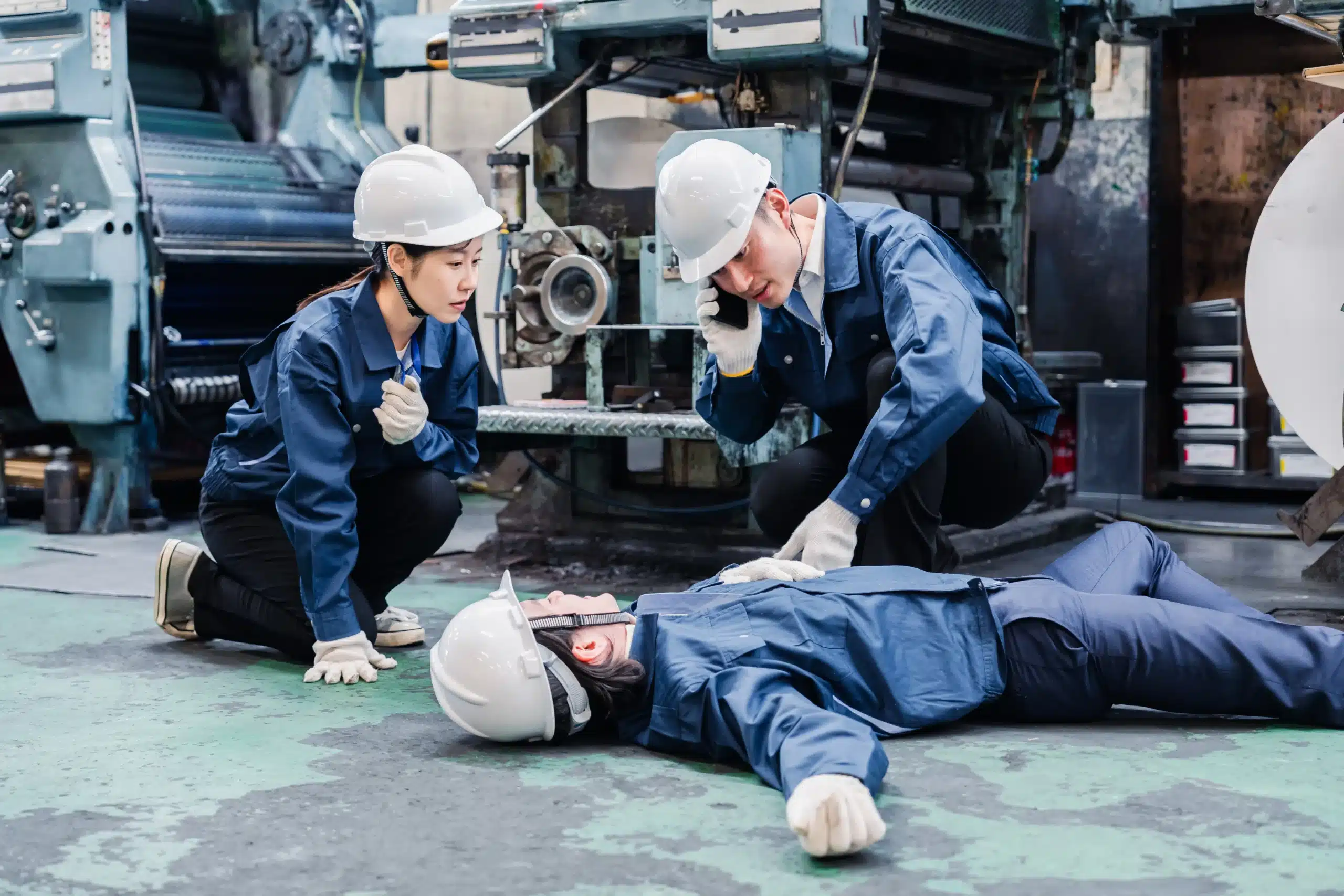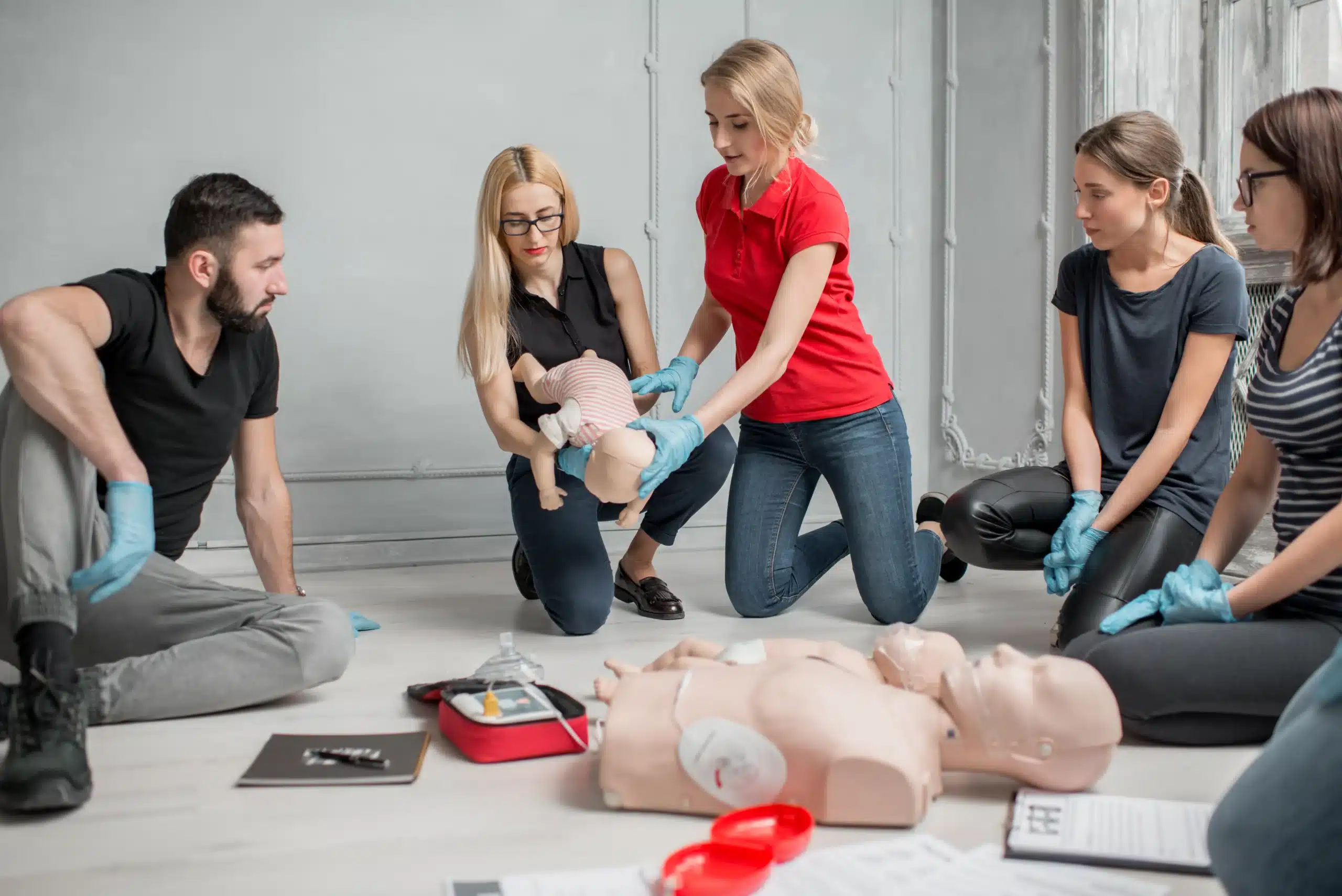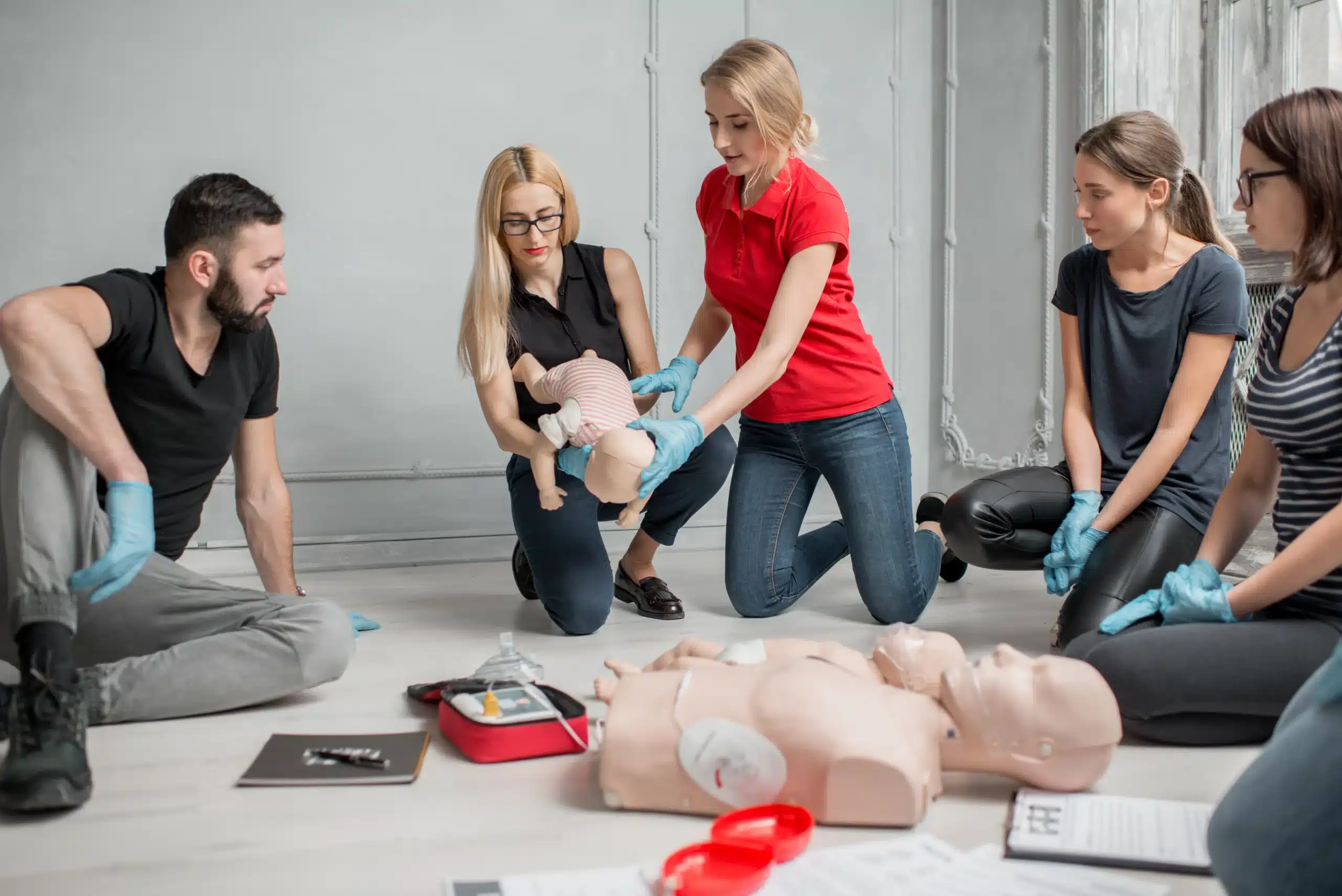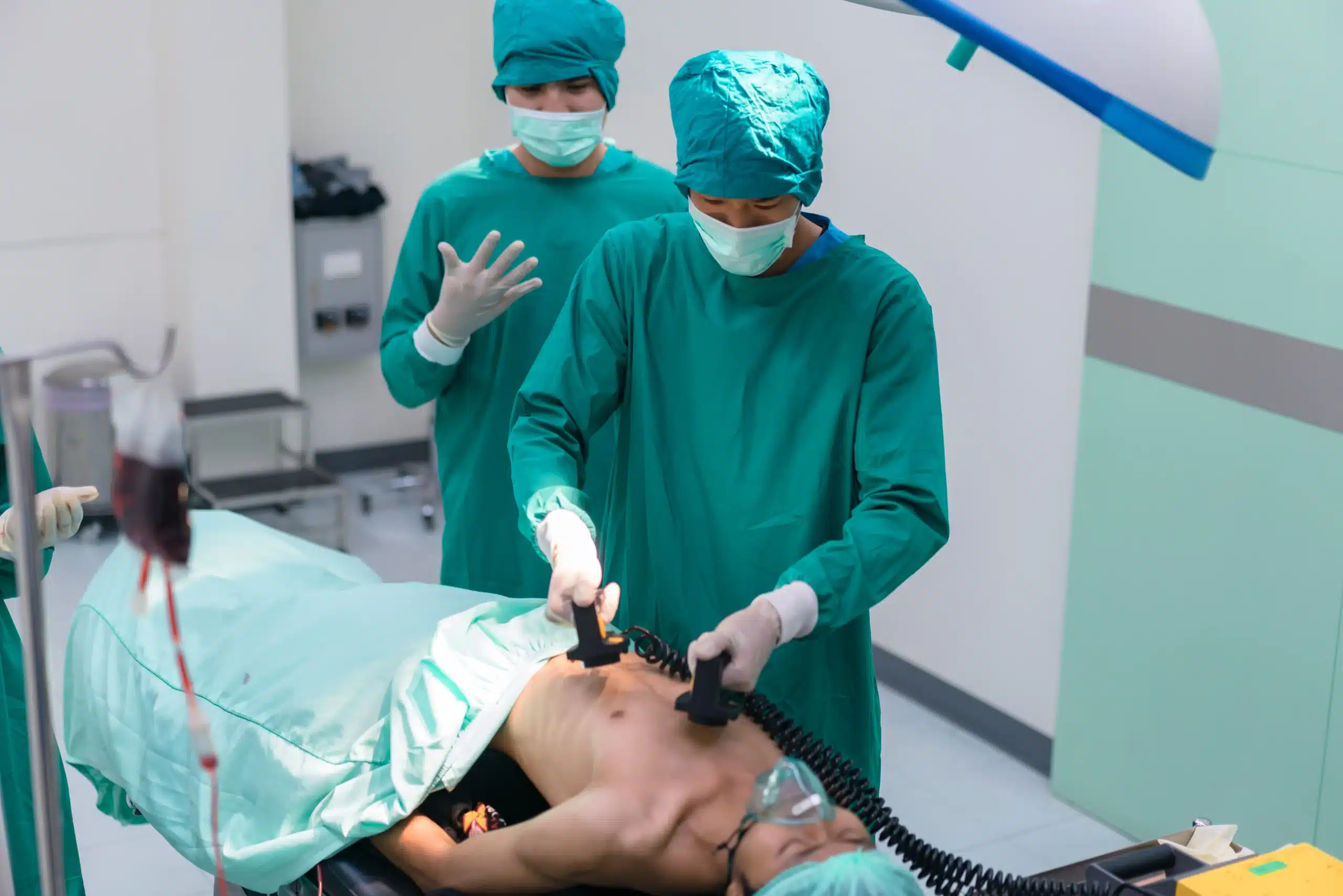Empower yourself with life-saving skills by obtaining your BLS certification in Milpitas. This comprehensive guide will walk you through the process, from understanding what BLS is to finding the right course for your needs. We’ll cover the importance of BLS in various professions, the core components of training, and the costs involved. We’ll also explore different course formats, discuss renewal requirements, and offer practical tips for preparing for your BLS class. Whether you’re a healthcare professional or simply want to be prepared for emergencies, this guide will provide you with the knowledge and resources you need to pursue BLS certification in Milpitas.
Key Takeaways
- BLS is a life-saving skillset: From healthcare settings to everyday life, BLS training empowers you to respond effectively to medical emergencies with techniques like CPR and AED use.
- Choose your training wisely: Select an AHA-accredited course with experienced instructors and hands-on practice to maximize your learning and ensure a high-quality certification.
- Stay current and confident: Renew your BLS certification every two years and engage in regular practice to maintain your skills and preparedness for emergencies.
What is BLS Certification & Why Do You Need It?
BLS, or Basic Life Support, is a crucial course for anyone involved in healthcare or responding to medical emergencies. It provides the skills and knowledge to deliver immediate care during life-threatening situations, like cardiac arrest or choking. Think of it as the foundation for saving lives. This training empowers you to confidently take action and potentially make all the difference.
Definition & Core Components
BLS certification equips you with the essential tools to respond effectively to various medical crises. The curriculum covers core life-saving techniques, including high-quality CPR for adults, children, and infants. You’ll also learn how to use an automated external defibrillator (AED), a portable device that can help restore a normal heart rhythm. Additionally, BLS training addresses basic airway management and techniques for assisting someone who is choking. These combined skills prepare you to handle a range of emergencies and provide vital support until professional medical help arrives. For more information on CPR, check out the American Heart Association’s resources.
Importance in Healthcare & Emergency Response
In healthcare settings, BLS certification is often a prerequisite. It ensures that healthcare providers possess the fundamental skills to respond effectively to emergencies. This training instills confidence and empowers professionals to deliver timely and appropriate care, ultimately improving patient outcomes. During emergencies, seconds count, and BLS-trained individuals can immediately intervene, increasing the chances of survival. Beyond technical skills, BLS certification emphasizes teamwork and communication, vital components of effective emergency response. The Red Cross offers additional information on AEDs and their importance in emergency situations. Whether you’re a doctor, nurse, medical student, or other healthcare worker, BLS training is a cornerstone of your professional development. It enhances your career prospects and fulfills regulatory requirements. Even outside of healthcare, BLS certification can be a valuable asset. It demonstrates your commitment to safety and preparedness. Consider getting your BLS certification to enhance your skills and contribute to a safer environment. You can find more information on BLS courses in Milpitas on the Milpitas CPR Classes website.
Find Top BLS Certification Providers in Milpitas
Finding the right BLS certification course is crucial for your career and confidence in emergencies. Here’s a breakdown of common places to find BLS training in Milpitas:
Milpitas CPR Classes
For comprehensive, AHA-certified BLS training in Milpitas, Milpitas CPR Classes is a great option. They offer convenient locations and flexible schedules, making it easier to fit training into your busy life. Their courses cover essential BLS components, including CPR for adults, children, and infants, AED use, and choking relief. You’ll receive your official AHA certification card upon successful completion, valid for two years. Serving Milpitas, San Jose, and Santa Clara, they’re a convenient local choice. They also offer the RQI program for healthcare professionals seeking a more flexible renewal option.
AHA Training Centers
Want more options? Search directly through the American Heart Association website for other certified training centers nearby. This ensures your training meets the AHA’s standards. Many training centers offer various course formats, including in-person, blended learning, and online options.
Local Hospitals & Medical Centers
Hospitals and medical centers often provide BLS certification courses for their staff and sometimes the public. Check with hospitals in Milpitas and surrounding areas like San Jose and Santa Clara to see what they offer. These courses are frequently taught by experienced medical professionals.
Community Colleges
Community colleges are another excellent resource for BLS certification. Many offer affordable courses open to the community. Check with your local community college for course schedules and availability. These courses often provide a solid foundation in BLS.
BLS Certification Costs & Value in Milpitas
Knowing the price range for BLS certification helps you budget and find a course that works for you. This section breaks down typical costs in Milpitas and explains what your investment covers.
Average Course Pricing
In Milpitas, BLS certification courses typically cost around $70 for a 3.5-hour class. This is a competitive price for the area and provides excellent value. You’ll find a range of courses at different price points. ACLS renewal classes range from $152 to $190, while PALS renewal is around $190. Initial ACLS certification is usually around $250. For online learning, HeartCode BLS, ACLS, and PALS courses are available, often priced around $63 and $150, respectively. See our BLS, ACLS, and PALS course options for specifics.
Discounts & Promotions
Many training centers in Milpitas offer competitive pricing and frequent promotions. Look for centers with a low-price guarantee, ensuring you get the most affordable training in Santa Clara County. This commitment to accessibility makes quality BLS training available to everyone. Milpitas CPR Classes is a great place to begin your search.
What Your Fee Covers
Your BLS certification fee covers more than just class time. It includes comprehensive training, all materials, and the certification exam. After completing the course, you’ll receive your American Heart Association BLS certification card, valid for two years. This nationally recognized certification validates your life-saving skills. You’ll receive your card the same day you finish the BLS class, so you can use your new skills right away.
BLS Class Duration & Format
Choosing the right BLS course format depends on your learning style and schedule. Let’s explore the options available in Milpitas.
In-Person Training
In-person BLS classes provide hands-on learning, ideal for those who prefer interactive environments. These courses typically last about 3.5 hours. You’ll work with a certified instructor, practice skills on mannequins, and receive your BLS certification upon completion. The cost for in-person training is $70.
Online & Blended Learning
If your schedule demands flexibility, consider a blended learning format. This combines online coursework with an in-person skills session. You complete the online portion, HeartCode BLS, at your own pace, then schedule a separate hands-on skills session in San Jose for $63 to demonstrate your learned skills.
Typical Course Length & Time Commitment
BLS certification is valid for two years, regardless of the format. To maintain your skills and knowledge of current life-saving practices, it’s crucial to renew your certification before it expires. This ensures you’re always ready to respond effectively in an emergency.
Key BLS Training Components
BLS training equips you with essential life-saving skills applicable in various settings, from hospitals to everyday life. This section breaks down the core components you can expect to cover in a BLS course.
Adult, Child, & Infant CPR
CPR, or cardiopulmonary resuscitation, is a cornerstone of BLS training. You’ll learn how to perform CPR on adults, children, and infants, recognizing the crucial differences in technique for each age group. This training provides you with the skills to respond effectively during cardiac arrest, a life-threatening condition that requires immediate intervention. CPR can double or triple a person’s chance of survival, making it a critical skill to possess. Milpitas CPR Classes offers comprehensive CPR training as part of their BLS certification course.
AED Use & Guidelines
Automated External Defibrillators (AEDs) are portable devices that can analyze heart rhythms and deliver an electric shock to restore a normal heartbeat. BLS training covers the proper use of AEDs, including how to assess the situation, apply the device correctly, and follow safety guidelines. Understanding AED operation is crucial, as prompt defibrillation significantly increases the chances of survival in cases of sudden cardiac arrest.
Choking Relief
BLS certification also addresses choking emergencies. You’ll learn techniques to help someone who is choking, including the Heimlich maneuver for adults and abdominal thrusts for children and infants. These skills can be invaluable in a crisis, enabling you to quickly and effectively clear a blocked airway.
Hands-On Practice & Skills Assessment
BLS training isn’t just about theory; it emphasizes practical application. You’ll participate in hands-on practice sessions to develop muscle memory and confidence in performing the techniques you learn. These sessions often involve realistic scenarios and simulations, allowing you to apply your skills under pressure and receive feedback from certified instructors. Many programs include skills assessments to ensure you meet the required proficiency levels before receiving your certification. This focus on practical training ensures you’re well-prepared to respond effectively in real-life emergencies.
Career Benefits & Professional BLS Requirements
BLS certification opens doors, whether you’re pursuing a healthcare career or simply want to be prepared for emergencies. It’s a valuable asset with a significant impact on your professional life.
Healthcare Professions That Require BLS
For many healthcare roles, BLS certification is mandatory. Consider professions like paramedics, emergency medical technicians (EMTs), nurses, and doctors. These individuals are often first on the scene in medical crises, and their BLS training provides the foundational skills to deliver immediate, life-saving care. From administering CPR to using an AED, BLS-certified professionals ensure patients receive critical support during emergencies, making BLS certification a cornerstone of a successful healthcare career. If you’re considering this path, obtaining your BLS certification is a crucial first step. Check with your desired profession’s licensing board for specific requirements.
Non-Medical Careers Enhanced by BLS
Even outside healthcare, BLS certification strengthens your resume. Think teachers, coaches, childcare providers, or personal trainers—anyone who works closely with the public. BLS training equips you to respond effectively in unexpected emergencies, creating a safer environment. It demonstrates a commitment to safety and preparedness, valuable qualities in any profession. Holding a BLS certification can distinguish you from other candidates and show potential employers you’re ready to handle critical situations.
Advance Your Career with BLS
BLS certification isn’t just about meeting requirements; it’s a career advancement tool. BLS training builds confidence and competence in providing emergency care, essential skills for growth. It shows employers your dedication to professional development and your ability to handle high-pressure situations. This can lead to more opportunities, greater responsibility, and even higher earning potential. Staying current with your BLS certification ensures you’re always equipped with the latest life-saving techniques, further enhancing your professional value. Confidence in your skills is a powerful asset, and BLS certification helps you cultivate it.
Choose the Right BLS Course in Milpitas
Choosing the right BLS course is crucial for your success. Here’s what to look for in a quality BLS program:
Accreditation & Recognition
First and foremost, ensure the course you select is accredited by a recognized organization like the American Heart Association (AHA). AHA-accredited courses adhere to the latest science-based guidelines and are widely accepted in healthcare settings. This accreditation ensures your BLS certification carries weight and demonstrates your commitment to high-quality training. Choosing an AHA-accredited provider like Milpitas CPR Classes ensures your training aligns with industry best practices.
Instructor Qualifications
Experienced, certified instructors make all the difference in your learning. Look for courses taught by instructors with real-world experience and a passion for teaching. Instructors who actively use BLS in their professional lives can offer valuable insights and practical tips. Check if the instructors hold AHA certifications and have a strong track record. Milpitas CPR Classes prioritizes experienced, AHA-certified instructors dedicated to comprehensive training.
Class Size & Hands-On Practice
The ideal BLS course offers plenty of hands-on practice. Smaller classes allow for more personalized instruction and a comfortable environment for questions. Look for courses that emphasize hands-on training with mannequins and equipment, allowing you to build muscle memory and confidence. Adequate practice time is essential for mastering the techniques and feeling prepared for real-life emergencies.
Reviews & Testimonials
Before choosing a course, read reviews and testimonials from past students. These firsthand accounts can offer valuable insights into the quality of instruction, the learning environment, and the overall experience. Positive reviews often highlight instructors who are engaging, knowledgeable, and supportive. Check out student feedback to see if a particular course aligns with your learning style. Look for programs with consistently positive reviews, indicating a commitment to student satisfaction.
Maintain Your BLS Certification
Keeping your BLS certification current is essential for any healthcare professional. It ensures you’re always prepared to provide high-quality care in emergencies. This section covers everything you need to know about maintaining your BLS credentials.
Renewal Requirements & Frequency
Your American Heart Association (AHA) BLS certification is valid for two years. To maintain your credentials and stay up-to-date on the latest life-saving techniques, you’ll need to renew it every two years. Check with your employer or certifying body for specific renewal deadlines and processes. Milpitas CPR Classes offers convenient BLS renewal courses to help you stay compliant.
Continuing Education
Continuing education is a cornerstone of professional development in healthcare. Regular BLS training provides numerous benefits, from increased confidence to improved patient outcomes. It also helps you stay compliant with workplace requirements and demonstrates your commitment to providing excellent care. BLS training reinforces the importance of teamwork in medical emergencies, a critical skill for any healthcare provider.
Stay Current with Guidelines
Staying informed about the latest AHA guidelines is crucial for effective emergency response. These guidelines are regularly updated to reflect current scientific evidence and best practices. Regular BLS training ensures you’re familiar with the latest algorithms and protocols, allowing you to adapt your approach and provide the most effective care. Comprehensive BLS courses cover these updates, equipping you with the knowledge and skills to confidently handle various emergency situations.
Common BLS Certification Misconceptions
It’s easy to get confused about BLS certification, especially with so much information online. Let’s clear up some common misconceptions about BLS training and what it takes to get certified.
Debunking BLS Myths
One myth is that BLS certification is only for doctors and nurses. BLS certification is valuable for a wide range of people, from healthcare providers like paramedics and EMTs to those in other professions, such as teachers, coaches, and other essential workers. Anyone who might need to respond to a medical emergency can benefit from this training. Another misconception is the time commitment. While comprehensive, many BLS courses are designed to be completed in a single day. Finally, BLS certification isn’t a one-and-done deal. It needs to be renewed every two years. For more information on renewal, visit our BLS renewal page.
Online vs. In-Person Training Clarified
Many people wonder if online BLS courses are as effective as in-person training. Online BLS courses can be just as rigorous and credible, especially those accredited by recognized organizations like the American Heart Association. Both online and in-person formats cover essential skills like using an AED, basic airway management, and helping someone who is choking. Our BLS page offers more details on course content.
Understanding Certification Validity
How long is your BLS certification valid? Typically, BLS certification lasts for two years. It’s essential to renew it to maintain your skills and knowledge. At Milpitas CPR Classes, we provide an AHA BLS Provider card the same day you successfully complete the course. This certification is valid for two years.
Prepare for Your BLS Class
Getting ready for your BLS class can make a real difference in how much you get out of the experience. Knowing what to expect, gathering your materials, and understanding the skills assessment will set you up for success.
What to Expect
BLS classes are designed to be interactive and hands-on. You’ll learn the American Heart Association’s algorithms for CPR, which provide a structured approach to patient care. These algorithms help healthcare providers make quick, informed decisions in emergencies. Your class will cover adult, child, and infant CPR, along with how to use an AED and relieve choking. Expect a combination of instruction, demonstrations, and practice sessions. You’ll receive your AHA BLS certification on the same day if you successfully complete the course, which is valid for two years.
Essential Materials & Resources
While your BLS provider will supply the necessary training equipment, having a few things of your own can enhance your learning. A notebook and pen are helpful for taking notes during discussions. Comfortable clothing is a must, as you’ll be actively practicing skills like chest compressions. Many students find it beneficial to review the BLS Provider Manual beforehand to familiarize themselves with the content. Accessing online resources like practice tests and interactive modules can also give you a head start and supplement your in-class training.
Tips for Skills Assessment & Testing Success
The skills assessment is a crucial part of BLS certification. You’ll be tested on your ability to perform CPR and other life-saving techniques correctly. The best way to prepare is to practice! Take advantage of every opportunity to rehearse the skills during class. Don’t hesitate to ask your instructor for feedback and clarification. Regular practice and simulation training, even after you’re certified, can significantly improve your skill retention and boost your confidence in real-life emergencies. Studies show that this continued practice is highly beneficial for healthcare providers. Remember, the goal is to become proficient in these skills so you can effectively respond in critical situations.
Related Articles
- BLS Certification in Santa Clara: Your Full Guide – Milpitas CPR Classes
- Online BLS Classes in Milpitas: Your Complete Guide – Milpitas CPR Classes
- BLS for Healthcare Providers in Santa Clara: A Guide – Milpitas CPR Classes
- BLS ACLS Courses in San Jose: A Complete Guide – Milpitas CPR Classes
- BLS Renewal in San Jose: Your Complete Guide – Milpitas CPR Classes
Frequently Asked Questions
How long does it take to get BLS certified? BLS courses are typically completed in a single day, often lasting around 3.5 hours for in-person training. Blended learning options allow you to complete the online portion at your own pace before scheduling a shorter in-person skills session.
What’s the difference between online and in-person BLS classes? Both online and in-person BLS courses cover the same core material, including CPR, AED use, and choking relief. In-person classes offer immediate feedback and hands-on practice with an instructor. Online courses provide flexibility, allowing you to learn the material at your own speed before demonstrating your skills in a separate in-person session.
How much does BLS certification cost in Milpitas? In Milpitas, BLS certification typically costs around $70 for the complete course. This usually includes all materials, the certification exam, and your official AHA BLS Provider card. Keep an eye out for discounts and promotions offered by various training centers.
How often do I need to renew my BLS certification? BLS certification is valid for two years. To maintain your credentials and stay up-to-date with the latest guidelines, you’ll need to renew your certification every two years.
Why is BLS certification important? BLS certification is essential for healthcare professionals and anyone who might need to respond to a medical emergency. It equips you with the skills and knowledge to provide immediate care during life-threatening situations, potentially saving lives. Even outside of healthcare, BLS certification demonstrates a commitment to safety and preparedness, valuable qualities in any profession.
